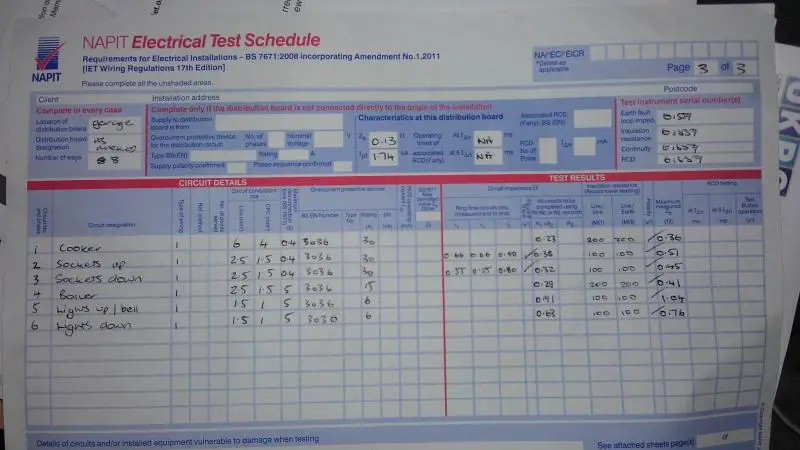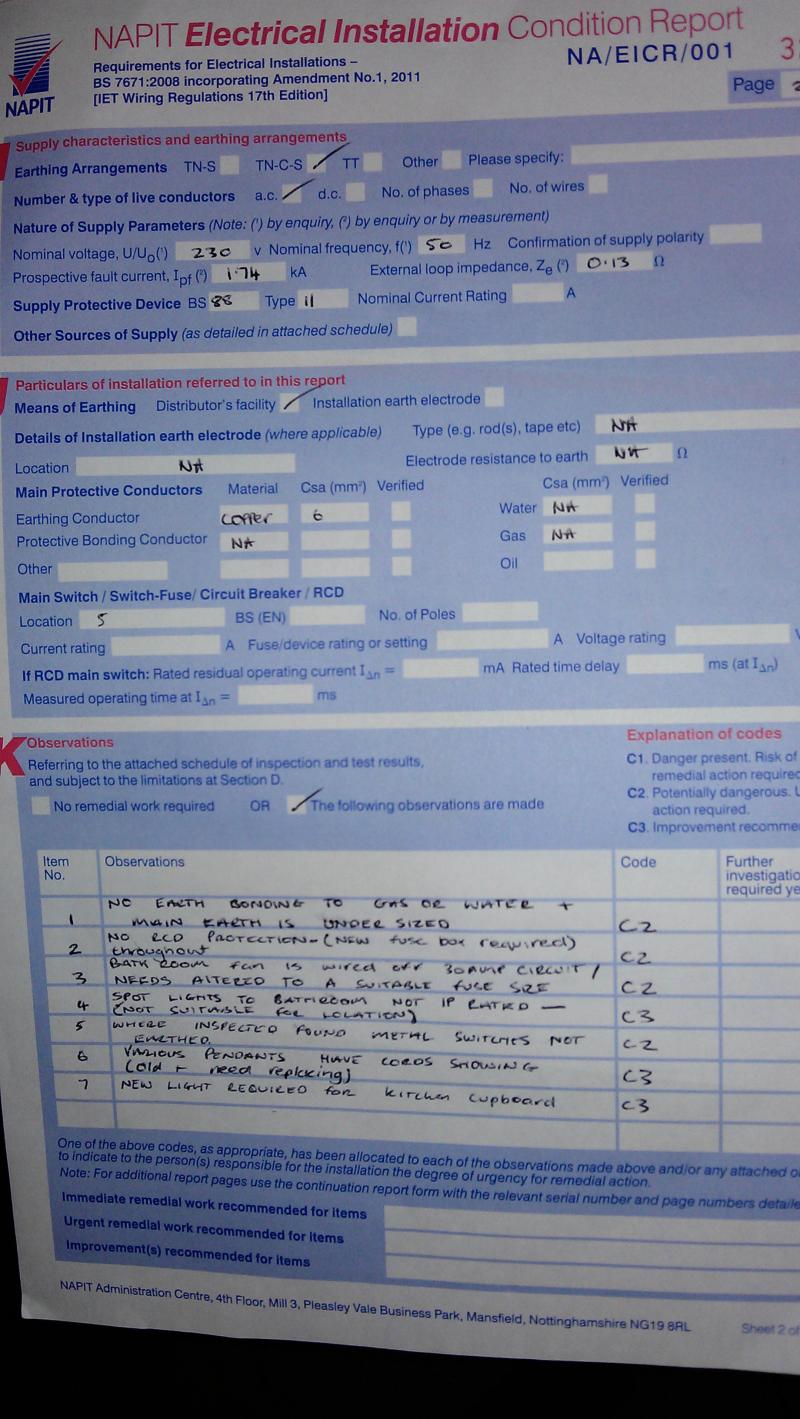Hi all!
I am looking to purchase a home and have just had a electrical test completed on the house. It has come back with a few items to be fixed, I was just wondering if anyone could give it a read over and see if the quote is in the right ball park:
No earth bonding to gas/water and main earth undersized
New fuse box with RCD protection
Bathroom fan wired on 30A circuit, to be rewired on 6A circuit
Spot lights in bathroom not IP rated
Number of metal switches not earthed - mentioned the back box was so just a case of connecting to switch
Few pendants replacing and a new cupboard light.
He is sending out a formal quote but reckoned £700-800, can't recall if that inc VAT. Does that sound reasonable?
Also...
The house was built in the late 70's, hasn't had a rewire carried out and wiring is ok as is. Now I know this is a 'how long is a piece of string' question but how likely it would require a rewire in the foreseeable future (<10yrs)?
What is it that warrants a rewire? Degradation of the wire insulation? I'm just wondering what sort of values these circuit impedances and insulation resistances 'should' be.
Thanks for any assistance
I am looking to purchase a home and have just had a electrical test completed on the house. It has come back with a few items to be fixed, I was just wondering if anyone could give it a read over and see if the quote is in the right ball park:
No earth bonding to gas/water and main earth undersized
New fuse box with RCD protection
Bathroom fan wired on 30A circuit, to be rewired on 6A circuit
Spot lights in bathroom not IP rated
Number of metal switches not earthed - mentioned the back box was so just a case of connecting to switch
Few pendants replacing and a new cupboard light.
He is sending out a formal quote but reckoned £700-800, can't recall if that inc VAT. Does that sound reasonable?
Also...
The house was built in the late 70's, hasn't had a rewire carried out and wiring is ok as is. Now I know this is a 'how long is a piece of string' question but how likely it would require a rewire in the foreseeable future (<10yrs)?
What is it that warrants a rewire? Degradation of the wire insulation? I'm just wondering what sort of values these circuit impedances and insulation resistances 'should' be.
Thanks for any assistance




